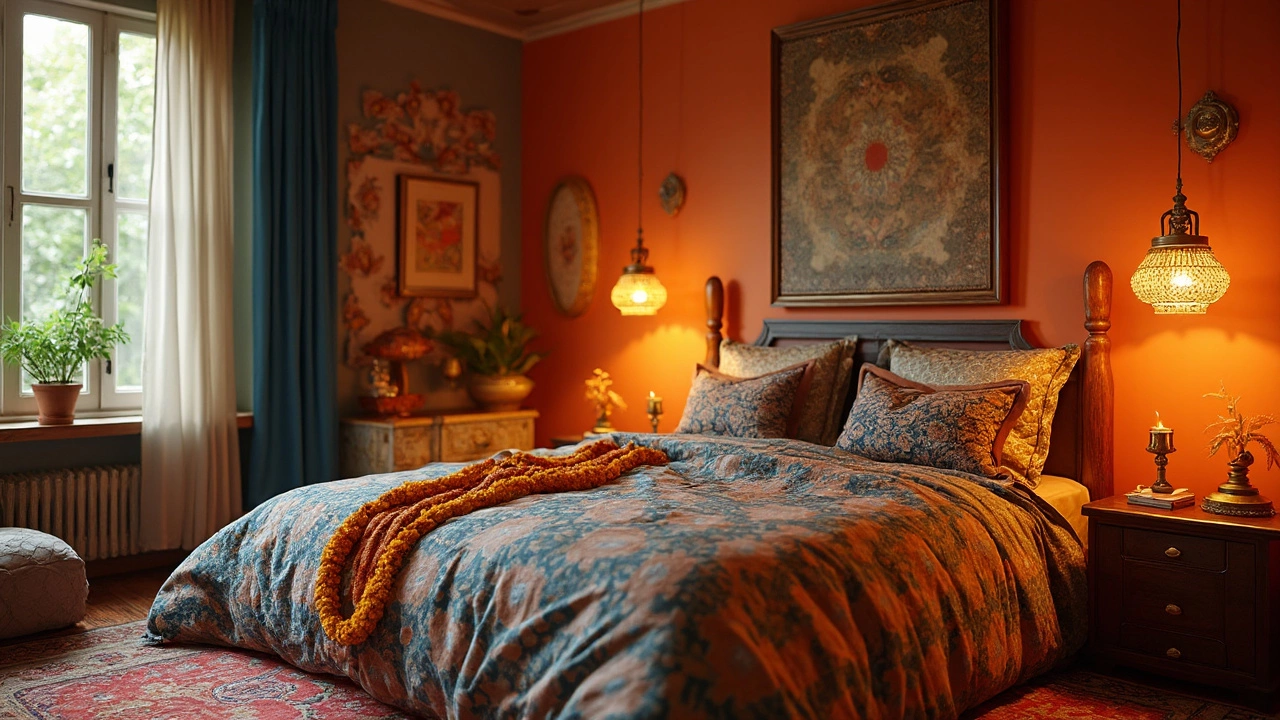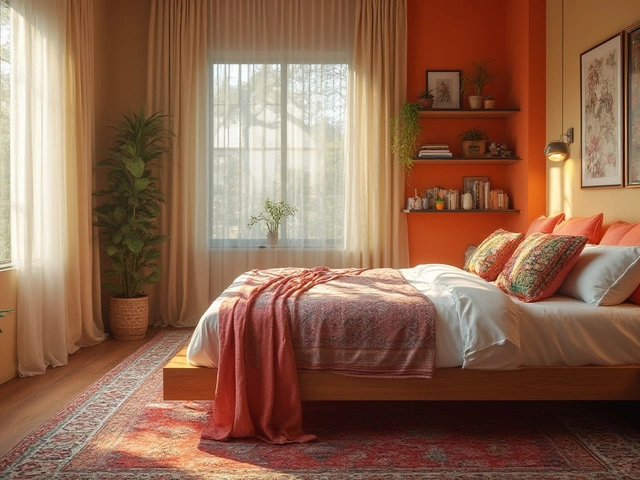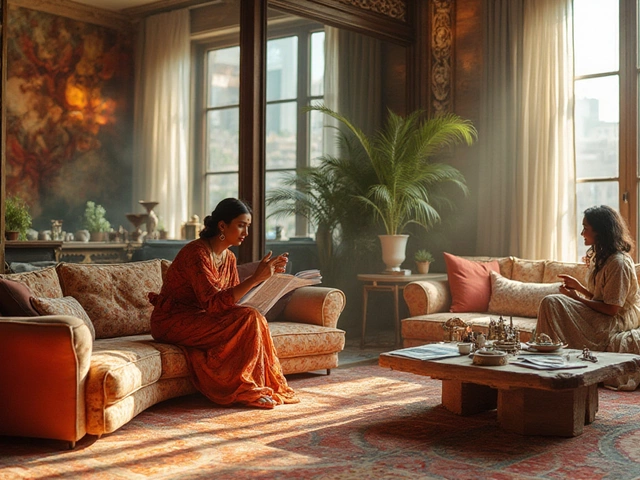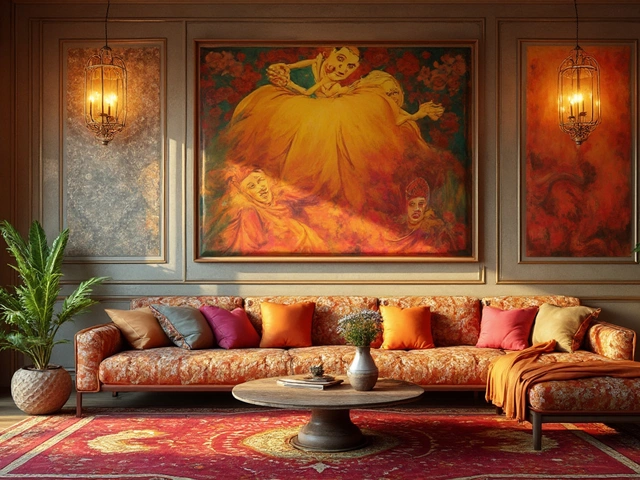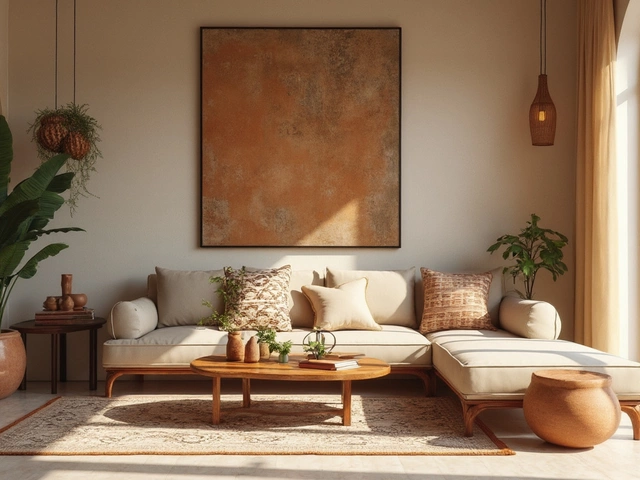Decorating a bedroom might seem like a daunting task, but it doesn’t have to be. Imagine it as a puzzle – every piece has its place, and when assembled correctly, it creates a picture-perfect space. So where do you start? Right at the beginning with color. Your color scheme sets the mood and the tone for the room. Do you want something bold and energizing, or perhaps something calm and soothing? This decision will guide many of your other choices.
Once you’ve nailed down your colors, it's time to arrange the furniture. Consider the room's size and shape – it’s not just about fitting everything you love but ensuring the space is functional. A common tip? Start with the bed as the focal point, usually the largest piece, and work around it. Don’t be afraid to shift things around a few times; the perfect layout is worth the effort.
- Set Your Color Scheme
- Practical Furniture Layout
- Personalize with Wall Decor
- Choose the Right Lighting
- Accessorize Wisely
- Add Finishing Touches
Set Your Color Scheme
Choosing a color scheme is your first step in creating a cohesive bedroom decor. Let’s face it, colors have a huge impact on mood and perception. Want to feel cool, calm, and collected? Go for blues and greens. Prefer something warm and inviting? Yellows and oranges are your friends. Color psychology might sound fancy, but it's about picking what makes you feel good. You can’t go wrong if you choose what resonates with you.
Start with a Base Color
Your base color is often the main color you’ll use across big items like walls and furniture. It sets the tone for the entire space. Neutral tones like whites, greys, and beiges can be great because they create a blank canvas that lets other colors pop. Plus, they’re super adaptable for future changes.
Add Complementary Shades
Once you've got your base down, sprinkle in some complementary shades. Think of these as the supporting actors to your leading star. They can be in the form of cushions, throws, or even smaller pieces of furniture. A good rule of thumb is to keep a mix of three colors: the main one, a softer option, and a bolder one to add some pop.
Consider the Room's Lighting
Lighting plays a sneaky but crucial role in how colors seem. Natural light can make colors look more vibrant, whereas artificial light might tone them down. If your bedroom gets a lot of sun, consider how that will influence your color choices during the day. Got less light? Lighter shades can help open up the space and make it feel more airy.
If you're curious, here's a little fun fact: A study found that people tend to sleep better in rooms painted with cooler colors like blue and green compared to warmer shades. While designing, it’s these little tidbits that can make a big difference in setting the right atmosphere for rest and relaxation.
Practical Furniture Layout
Arranging furniture is like playing a game of Tetris – it’s all about figuring out how to fit each piece perfectly. Start with the largest item you'll have, typically the bed, which should ideally face the door as it creates a welcoming view when you enter the room. It's a psychological trick that makes the space feel more open and inviting.
Once the bed is in place, the next focus should be your storage options. Dressers, wardrobes, or closets come next. Position these along larger walls or in less trafficked areas to maximize floor space. Keep them within easy reach of the bed to make accessing your clothes convenient in the morning rush.
Nightstands should flank the bed for symmetry and functionality. Opt for pieces that offer additional storage to minimize clutter. You want these to be at a comfortable height, ideally level with the top of your mattress, so grabbing that glass of water doesn't feel like a workout.
Balance and Flexibility
Remember, balance is key. If one side of the room feels heavier, shift some elements until the room feels balanced. If the dresser is hefty, balance it with a larger mirror on the opposite wall – it’ll create the illusion of space and light.
Flexibility is also a must. It’s okay to change up the layout; you are not married to your first setup. Seasonal changes or mood shifts can inspire furniture rearrangements to keep things fresh.
Common Mistakes to Avoid
- Overcrowding: Don't jam too much furniture in a single place. It's better to have less and enough room to move.
- Blocking natural light: Avoid placing large items in front of windows to keep the room bright.
- Ignoring the traffic flow: Ensure you have a clear path from the door to the bed and other key areas.
In small rooms, multifunctional furniture like a bed with drawers or a fold-out desk can be a game-changer. At the end of the day, your bedroom should be a reflection of your style and a place that promotes relaxation. Happy arranging!
Personalize with Wall Decor
After you've settled on a color scheme and furniture layout, it's time to bring some personality into your space with wall decor. This is where the magic happens, turning a plain room into a reflection of who you are. Whether you're a minimalist or a maximalist, wall decoration is your chance to make your bedroom truly unique.
Pick Your Art Pieces
Look for artwork that speaks to you. It might be a large statement piece above the bed or a gallery wall of smaller frames. Remember, art doesn’t just mean paintings or prints; it could be photography, posters, or even your own creations. Consider themes or colors that complement your room’s vibe.
Mixing Up Textures
Think outside the box with textures. Throw in some tapestries, fabric wall hangings, or metal art pieces. These elements add depth to the room and can intensify the feel you're going for, whether it’s cozy chic or ultra-modern.
Consider the Layout
The layout is everything. Are you drawn to symmetry or more of an eclectic mix? There’s no wrong answer, but take the time to arrange and rearrange until it feels right. You can use paper cutouts taped to the wall to experiment with arrangements before committing.
Add a Personal Touch
Incorporating personal touches is a great way to make your decor feel intimate. Framed family photos or a map of your favorite city can speak volumes. A personalized wall gives your bedroom a unique aura and is often a great conversation starter.
Did you know that according to a recent survey, 71% of people feel that personalizing their room design with wall art significantly impacts their mood? Here's a quick glance at some popular wall decor types people use:
| Wall Decor Type | Percentage of Usage |
|---|---|
| Posters & Prints | 54% |
| Family Photos | 68% |
| Paintings | 43% |
| Tapestries | 35% |
Personalizing your space helps create a bedroom that’s more than just a place to sleep. It's an extension of you. So pick your pieces with love!
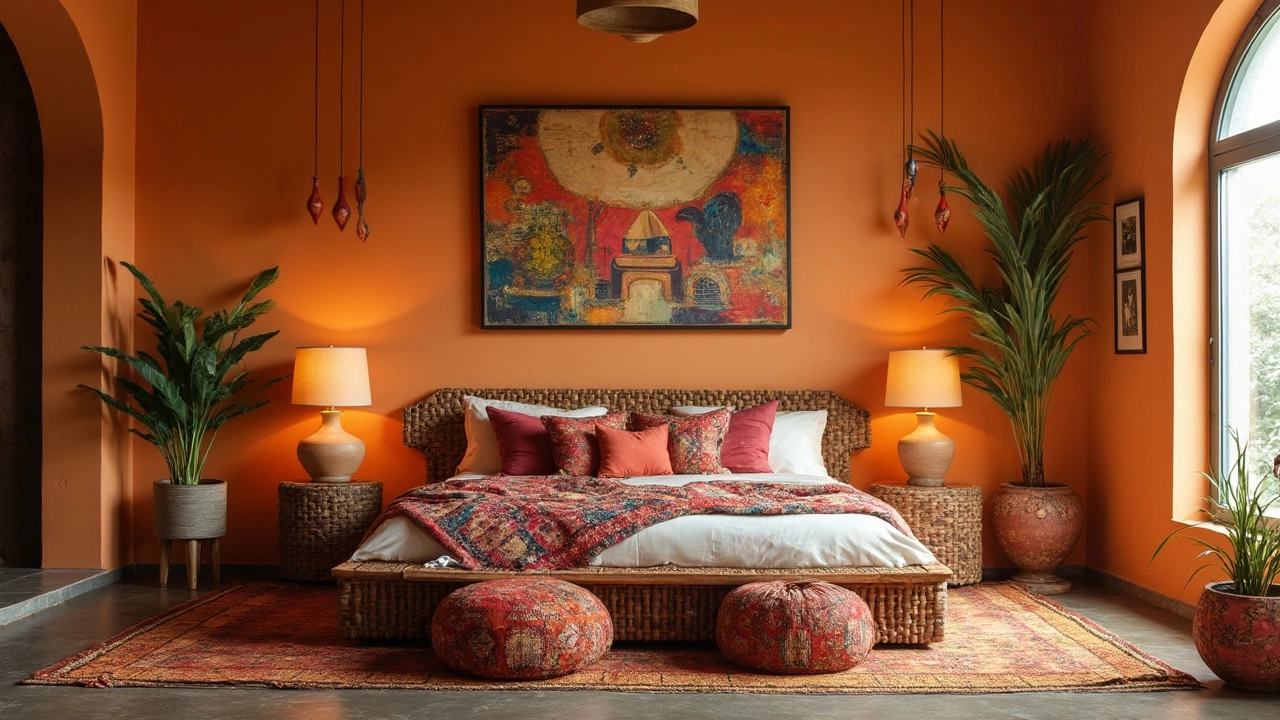
Choose the Right Lighting
Lighting in a bedroom is more than just a functional necessity. It sets the vibe, affects your mood, and can even make or break a room’s design. To get this right, you want to consider layering your lighting. This isn't just about slapping a lamp on a nightstand and calling it a day. Let's dive into some details.
Types of Lighting
When it comes to bedroom decor, blend three types of lighting: ambient, task, and accent lighting. Ambient lighting, like ceiling fixtures or wall sconces, provides overall illumination. Task lighting, such as bedside lamps or desk lights, is focused and necessary for activities like reading. Accent lighting highlights features in your room, like art on the walls, creating depth and interest.
Considerations for Your Needs
Your lighting choice should align with your needs. Do you read in bed? Task lighting with an adjustable lamp is great. Want to create a cozy environment? Accent lights with warm bulbs might be your go-to. It's all about creating flexibility in your bedroom decor.
Bulb Choices and Their Impact
- LED bulbs: Energy-efficient and long-lasting, perfect for those who want a sustainable option.
- Halogen bulbs: Mimic natural daylight, helping to keep you alert, ideal for task lighting.
- Incandescent bulbs: Known for a warm glow but aren’t as energy-efficient as their newer counterparts.
Pro-tip: Use dimmer switches. They offer control over your lighting levels, helping the room adapt from a bright morning to a soft evening environment. This can be a game-changer in your interior room design.
Remember, choose what feels right for you. Play around with arrangements, and do a little trial and error to see what lighting transforms your space from bland to grand.
Accessorize Wisely
Accessories are the cherry on top for any bedroom decor. They're your chance to sprinkle in personality and flair without going overboard. But how do you do it right? That's the magic.
Focus on Textiles
Start with textiles like rugs, curtains, and bedding. They’re softer elements that add warmth and cohesion to the bedroom decor. A plush rug can provide a cozy foundation while adding a splash of color or pattern. Don't be afraid to mix textures too – pairing a velvet throw with a cotton quilt, for instance, can create layers of depth and interest.
The Art of Wall Decor
Your walls are prime real estate for showing off your interests. Whether it’s bold artwork, framed photographs, or even a tapestry, these elements can become focal points in your room. Just make sure they match your overall color scheme to keep things harmonious.
Lighting for Mood
Lighting isn't just practical; it's transformative. Think beyond the usual overhead light. Consider table lamps, floor lamps, or even wall sconces to create different lighting zones, helping to set just the right mood. The key is versatility – dimmer switches are your friends here!
Personal Touches
And then come the little things – personal touches like plants, books, or a quirky clock. They're what make your bedroom truly yours. Try adding a splash of greenery; succulents or potted plants can bring in fresh energy and improve air quality too.
While you accessorize, keep in mind two important things: balance and functionality. Avoid clutter by grouping similar items or opting for a few larger pieces instead of many small ones. Also, choose accessories that serve a purpose, whether it’s additional storage or a mirror to bounce light around.
Add Finishing Touches
This is the part where your bedroom decor truly comes to life. Adding finishing touches gives your space character and makes it feel complete. These elements are like the accessories to an outfit – they're what make everything pop.
Textiles and Soft Furnishings
Think about adding soft furnishings like throws, cushions, and rugs. These not only add warmth and texture but can also inject some color into the room. Choose fabrics in complementary hues or patterns to your color scheme. It's amazing how a new throw blanket can transform the look of the space.
Plants and Greenery
Adding some greenery is an easy way to breathe life into a room. Plants can improve air quality, and they bring a sense of calm and tranquility. Consider a low-maintenance plant like a snake plant or peace lily if you're worried about keeping them alive.
Artwork and Personal Items
Hanging artwork is an excellent way to personalize your bedroom. It’s a chance to showcase your taste and bring what you love into the room. A well-placed piece can serve as a decorating focal point or tie together various elements of your room. Don't forget framed photos or a small gallery wall to showcase treasured memories.
Lighting and Candles
Switching up your lighting, even if it's just a new set of bedside lamps, can change the room's atmosphere. Adding different layers of light – from bright overheads to ambient candles – can enhance the mood for any occasion. Candles not only provide soft illumination but also a delightful scent.
Final Checks
Before you kick back and enjoy your newly decorated space, take a step back. Look at the room with fresh eyes. Are there any missing elements or clutter that needs tidying up? Small tweaks can make a big difference in achieving balance and harmony.
